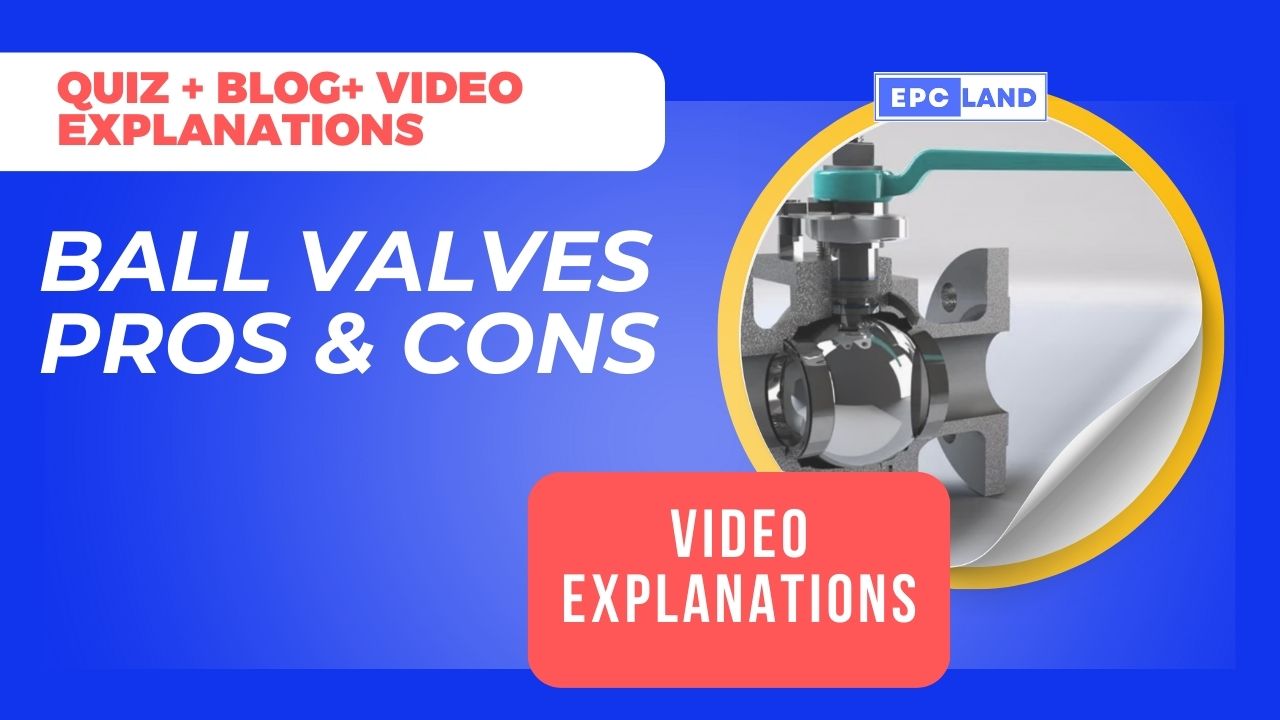Ball Valves: 10 Crucial Questions Unlocked
Ball valves are essential components in piping systems across various industries, known for their effectiveness in controlling fluid flow. Understanding the applications, advantages, and limitations of ball valves is critical for effective piping engineering and system design. This post dives deep into these aspects, offering insights into where and why ball valves are the go-to choice, their key benefits, and important considerations to keep in mind during selection and operation. Explore the fundamental concepts behind these widely used valves and test your knowledge with our comprehensive quiz.
Table of Contents
👉 Check Course on Piping Engineering
Test Your Knowledge: 10 Essential MCQs
1. What is the primary function of ball valves in piping systems?
2. What does it mean for a ball valve to provide “bubble tight shut off”?
3. For which applications are metal seated ball valves often preferred?
4. How quickly can a ball valve typically be opened or closed?
5. Compared to gate valves of the same size and pressure rating, how do ball valves typically compare in terms of physical characteristics?
6. What is a significant disadvantage of using ball valves in throttling applications?
7. Why are ball valves generally not suitable for fluids carrying suspended particles or in slurry services?
8. What potential issue can arise in a pipeline due to the quick opening or closing of ball valves?
9. Ball valves are commonly used with instrument tubing for what purpose?
10. Under what conditions is maintenance typically cost effective for ball valves?
👉 Browse EPCLAND Courses
Major Takeaways
- Ball valves are primarily used for starting and stopping fluid flow, functioning effectively as on-off or stop valves.
- A key advantage of ball valves is their ability to provide bubble tight shut off, ensuring no leakage when closed.
- They are suitable for a wide range of fluid services including air, gases, vapors, and hydrocarbons.
- Ball valves operate quickly, requiring only a 90° turn to fully open or close.
- Compact and lightweight design makes ball valves valuable in piping layouts.
- A significant limitation is that ball valves are not suitable for throttling or controlling flow proportionally.
Conclusion
In summary, ball valves stand out as highly useful components in numerous industrial applications, particularly where quick, reliable on-off control and tight shut off are paramount, such as in gas, air, or liquid services. Their compact size and quick operation contribute to efficient piping design. However, it is crucial to remember that ball valves are not designed for flow control through throttling and are best avoided in applications involving fluids with suspended solids to prevent potential issues. Selecting the right valve type, including understanding the capabilities and limitations of ball valves, is a fundamental aspect of effective piping engineering.
👉 Visit Quiz Blog Collection



